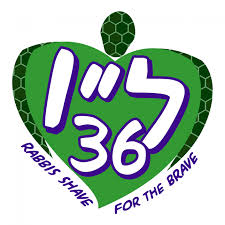As I awoke this morning and ran my fingers through my hair, I tried to recall my earliest memories of doing g’milut chasadim (acts of loving kindness) and taking action for social justice. I was flooded with memories that go back many years.
Probably my earliest memory is of my father Mark Novak running for United States Congress.
I recall hanging out in his campaign office, my first ride in a convertible as we participated in a Fourth of July parade. As a 5-year-old I’m sure I didn’t quite understand what it was he was doing, but now I know that it was one of his many efforts to put values into action.
One of my favorite family stories to tell is of my grandfather, Elmer Novak, who singlehandedly integrated the elementary schools in his small southern town of Salem, IL. When some of the farmers came to him and said, “Mr. Novak, what are we going to do? So-and-so’s daughter is now old enough to go to school!” My “friend” Elmer said, “She’s going to go to school!” And she did.
I remember collecting quarters for JNF to plant trees in Israel, and visiting the elderly at the Jewish Home.
I remember my mom not buying grapes and teaching us about the grape boycott.
I remember teacher strikes and my parents commitment to not crossing the picket lines.
I remember that dinner at Bob’s Big Boy on evening after Hebrew school when mom and dad suggested to Debbie and me that perhaps instead of getting bat mitzvah presents we should ask our family and friends to make donations to tzedakah. Debbie and I chose two temple funds that our family had been active in supporting: relief for Soviet and Iranian Jewry and relief for Cambodian and Vietnamese refugees. I still have the list of all the people who made donations, with our 13-year old scribbles of who wrote which thank you note.
Just months earlier our family had participated in sponsoring a Vietnamese refugee family so that they could find safety in the United States. Debbie and I cleaned out our closest of clothes and toys in hopes of helping a frightened 5-year-old girl and her family (mom, dad, older brother). We helped mom pull together housewares and essentials for this family who became a part of our own. Mom is still close today with that little girl who is now a grown woman and mother.
And this is all before high school!
So, when I reflect this morning on why I am shaving my head I have come to two conclusions.
1. It’s my parent’s fault. We can blame our parents for lots of things. They get lots of positive credit for this one. My parents taught me the importance of helping others, for fighting against injustice. They taught me to take responsibility in our world and help make change. They taught all of us – my sister and brother and me – to live out the Jewish values with which they raised us.
2. It’s who I am. My dear friends and colleagues know that I live by the teachings of Rabbi Tarfon. My parents, my Jewish community, my teachers and mentors have all taught me that I can make a difference in the world. So, when my friends Rebecca and Liz and Phyllis invited me to participate in#36rabbis Shave for the Brave, I could not sit idly by.

Today is for the Sommers and all the families who have experienced the loss of a child.
Today is for those in my life who are currently fighting their own battles with cancer.
Today is for all those who have helped me reach – and surpass – my fundraising goal. (Let’s keep it going!)
My daily meditation these past couple months has been from the lyrics of a traditional gospel song, recently adapted into Hebrew with the verses of Psalm 118:19. It is with these words on my heart, that I shave my head tonight.
Lord prepare me to be sanctuary Pure and holy, tried and true
And with thanksgiving, I’ll be a living Sanctuary for you.
Pitchu li sha’arei tzedek avo-vam ode Yah
Open the gates of righteousness for me that I may enter them and praise God.
Rabbi Laura Novak Winer serves as the First Vice-President of the Board of the National Association of Temple Educators. This was originally posted on her blog, Rabbi Laura.










